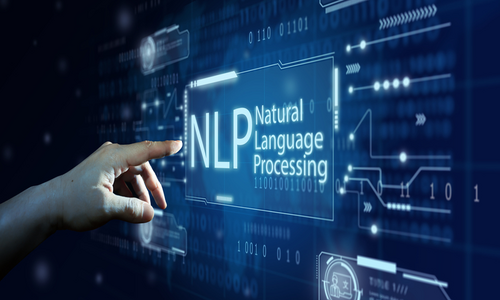NLP (Natural Language Processing) could be called the voice in response to human language in simple words. It is an AI component that allows computers to comprehend their users’ language and follow commands. Natural Language Processing is an application to assist in automating tasks. Spell check, ticket classification, and machine translation are examples of NLP applications.

Jump ahead to
Common Examples Of Natural Language Processing
The daily computer functions involve this element of AI that might be surprising to know. Some prominent examples have been discussed here.
Text classification
Text classification functions on the three aspects of NLP. These are sentiment analysis, intent detection, and topic classification. It involves the tagging of a piece of text as per the defined categories of the content’s tone.
Sentiment analysis
A sentiment classifier is an NLP tool that discriminates reviews as negative and positive when tagging a text. It is helpful in detecting the increase or decrease in social media reviews about a specific brand. The organization can act at the earliest just by viewing the number of negative reviews reported by this NLP tool. This example of NLP is called sentiment analysis which detects consumer perception.
Intent detection
The intent detection feature of natural language processing is suitable for sorting email responses to outbound sales. It provides specific response options for email recipients, such as interested, bounce, unsubscribe, etc. This feature identifies the intention or goal behind texts.
Topic classification
A topic classifier is an NLP-enabled tool that detects the topic inside the text based on the pre-assigned categories by a user. Its efficiency depends on how relevant the selected types are. An employee of a software company should choose tags that are familiar with the text in the tickets received by customer support. These tickets usually mention words like feature requests, bugs, etc. So, such terms should be fed to the topic classifier.
Topic modeling
Natural language processing facilitates text grouping based on similar expressions and words. So, a user doesn’t have to create tags to find relevant topics within a text. This facility proves effective in the absence of familiar data.
Text extraction
This instance of NLP involves automatic text summarization or spotting the core information in the text. The keyword extraction feature functions on NLP. It selects the most relevant expressions and words to offer a preview of the main topics a user is searching. So, consumers need not have to read through an entire page to find the information they seek. Businesses can increase traffic to their web pages by implementing NLP in this form.
Natural language generation
This example of NLP is evident as a business solution for modern-day organizations that are flooded with bulks of unstructured data. Managing these data with the assistance of natural language processing is possible. Those organizations not deploying this technique end up in disasters caused due to large-scale data misinterpretation.
Machine translation
Google translate is the most common example of an NLP application in machine translation. It has accuracy like that of humans in translating text and speech to the language preferred by users. More customized translation models provide extra accurate results concerning a particular domain.
How Do Businesses Benefit From Natural Language Processing?
Online surveys, product reviews, emails, and posts on social media are examples of unstructured data. The application of NLP is mandatory to acquire valuable insights from such data. These insights speed up an organization’s decision-making processes. Natural language processing is productive in minimizing operation time and expenses by automating routine tasks.
A company’s productivity shoots up when it switches to the automation of the following two tasks:
Customer feedback analysis
The topic classifier plays a significant role in processing the data collected through online surveys for customers, product reviews, etc. It helps in adding categories to every open-ended response prepared in an NPS survey. This survey involves rating a company on the given score options against each question asked to a consumer. Analyzing consumer feedback becomes easier just by identifying the number of responses under each score category.
Customer support tasks
The increased use of chatbots in customer support departments and automated ticket routing prove the effectiveness of NLP. Agents can devote their time to delivering excellent customer support without worrying about handling frequent queries. Topic and text classification models of NLP allow criteria-based tagging of the consumer support tickets received by agents. So they can easily categorize customers with similar problems and attend those groups at a time. Ultimately, it is the organization that gains the benefit of cost-effectiveness.
How Does Natural Language Processing Function?
Natural language processing fragments human language into different parts for computers to understand a written text or a verbal message. It comprises two phases, namely algorithm development and data pre-processing. NLP uses AI to tailor the real-world language input for the computer or machine to grasp it. Pre-processing includes the following steps to highlight text features for the algorithm to function on. These are:
Tokenization – Text fragmentation into small parts.
Word filtration – Filtering the common words within the text so that only the unique ones remain.
Part-of-speech tagging – Marking the words in a text that is based on a figure of speech like adjectives, nouns, etc.
Lemmatization – Compressing words to their roots to enable easy processing.
Algorithms are developed on the basis of linguistic rules or machine learning, following data pre-processing.
The data created online and stored in an organization’s databases are text-heavy and unstructured, comprising human language. Inappropriate analysis of such data hinders the smooth sailing of business operations. Artificial Intelligence Expert Training program are now within one’s reach, and many professionals have benefited from them. NLP cannot function without AI, while businesses can’t function properly without NLP.



